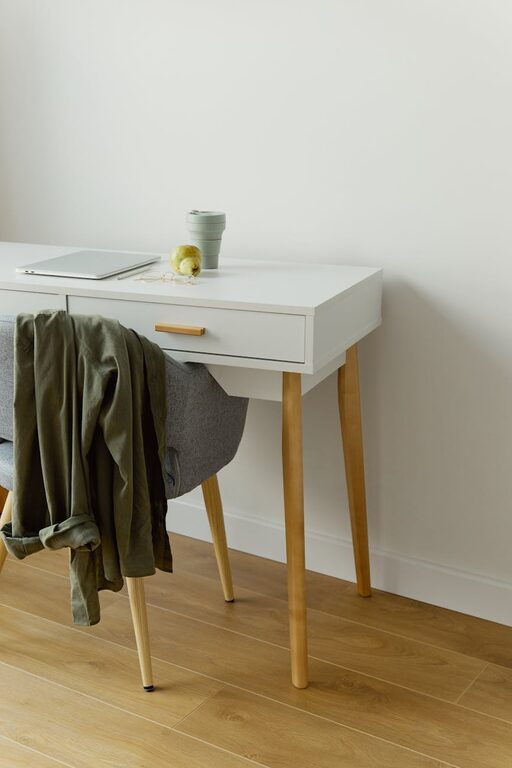Creating a comfortable and productive workspace starts with the right furniture, and a desk chair plays a crucial role in your day-to-day comfort. Whether you work from home or in an office, spending long hours seated requires a chair that supports your posture and keeps you comfortable.
In this post, we’ll explore practical tips to help you choose a desk chair that fits your needs and promotes wellbeing. From ergonomic features to style considerations, here’s what to keep in mind when shopping for your next chair.
Why Choosing the Right Desk Chair Matters
Sitting for extended periods can lead to discomfort, fatigue, and even long-term health issues such as back pain. A good desk chair reduces strain by providing proper support, helping you maintain good posture and focus better.
Investing in a quality chair also means improved productivity and fewer distractions caused by discomfort. With many options available, it’s important to know what features matter most.
Key Features to Look for in a Comfortable Desk Chair
1. Adjustable Height
One of the most important features is the ability to adjust the seat height. This ensures your feet rest flat on the floor, your knees are at a 90-degree angle, and your thighs are parallel to the ground. Proper height alignment helps reduce pressure on your legs and lower back.
When trying a chair, adjust the height and check if it fits your desk’s height comfortably.
2. Lumbar Support
The natural curve of your spine (lumbar region) needs support to prevent slouching and back strain. Look for chairs with built-in adjustable lumbar support or ones that curve inward at the lower back.
Good lumbar support keeps your spine aligned and reduces the risk of back pain throughout the day.
3. Seat Depth and Width
Your chair’s seat should be wide enough to sit comfortably without feeling cramped. Ideally, you want about 2 to 4 inches of space between the edge of the seat and the back of your knees.
Adjustable seat depth is a plus, allowing customization for your leg length. This helps prevent circulation problems and ensures better overall comfort.
4. Backrest Recline and Tilt Tension
A chair that allows you to recline or tilt can reduce pressure on your spine while seated. Tilt tension adjustment lets you control the resistance when leaning back, so you can find a comfortable position without too much effort.
A reclining mechanism also encourages movement, which is beneficial during long work hours.
5. Armrests
Armrests support your arms and shoulders, reducing strain and helping maintain good posture. Look for adjustable armrests that can be moved up, down, forward, or backward to match your workspace and body size.
Avoid armrests that force your arms too high or low, as this can lead to discomfort or tension.
6. Breathable Material
The material impacts both comfort and durability. Chairs with mesh backs promote airflow, which helps keep you cool during extended sitting periods.
Alternatively, padded fabric or leather chairs offer different aesthetics and comfort levels. Choose a material that feels comfortable for you and fits your workspace environment.
Additional Considerations When Choosing a Desk Chair
Mobility and Base
Most desk chairs come with caster wheels, allowing easy movement around your workspace. Ensure the wheels suit your flooring type (carpet, hardwood, etc.) to avoid damage or difficulty moving.
Check the base’s stability too; a five-point base is usually recommended for better balance.
Style and Aesthetics
While comfort is paramount, the chair’s style should also suit your office or home setup. Desk chairs come in various designs, from sleek modern options to traditional executive chairs.
Pick one that complements your workspace without compromising on essential ergonomic features.
Weight Capacity
Make sure the chair supports your weight comfortably. Most chairs list a recommended weight limit; selecting one that handles your body weight well ensures longevity and safety.
Budget
Desk chairs range from affordable basic models to high-end ergonomic chairs. Consider your budget but prioritize comfort and adjustability; sometimes investing a bit more pays off with better support and durability.
Steps to Test a Desk Chair Before Buying
- **Sit in the Chair:** Spend at least 10 minutes sitting to feel how it supports you.
- **Adjust All Features:** Play with height, armrests, backrest, and tilt to see if they suit your needs.
- **Check Posture:** Ensure your back is well-supported and your knees are at a comfortable angle.
- **Move Around:** Roll or swivel to test mobility and stability.
- **Consider Long-Term Comfort:** If possible, test sitting through a typical work session.
If buying online, check return policies in case the chair doesn’t match your expectations.
Maintenance Tips to Keep Your Desk Chair Comfortable
– Regular Cleaning: Dust and vacuum fabric or mesh to maintain breathability.
– Lubricate Moving Parts: Prevent squeaks and ensure smooth adjustments.
– Check Screws and Bolts: Tighten periodically for safety and stability.
– Replace Worn Casters: Replace wheels if they show wear to protect your floors and chair movement.
Final Thoughts
Choosing a comfortable desk chair involves understanding the key ergonomic features that support your body throughout the workday. Adjustable height, lumbar support, proper seat dimensions, and breathable materials can make a significant difference in your comfort and productivity.
Take your time to test different chairs, prioritize adjustability, and invest in a chair that encourages healthy posture. With the right choice, your workspace will become a more enjoyable and productive environment.
—
We hope these tips help you find the perfect desk chair that keeps you comfortable and focused all day long. Happy chair hunting!

